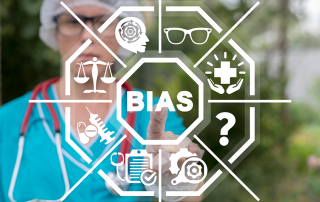Blog
Das neue Medizinforschungsgesetz: Was Stakeholder jetzt wissen müssen
Das Medizinforschungsgesetz (MFG) ist seit Ende Oktober 2024 in Kraft und bringt Neuerungen für alle, die mit der Entwicklung, Zulassung und Herstellung von Arzneimitteln und Medizinprodukten befasst sind.
Pharmakovigilanz im Fokus
„Pharmakovigilanz im Fokus: Effektive Meldewege und die häufigsten Fallstricke bei Nebenwirkungsfällen“ Erfahren Sie in diesem Vlog (Videoblog), wie Sie die Meldekette optimal nutzen und welche Fallstricke Sie vermeiden sollten, um die Sicherheit Ihrer Patienten zu gewährleisten.
Anwendungsbegleitende Datenerhebungen (AbD)
Eine Anwendungsbegleitende Datenerhebung (AbD) ist eine nicht-randomisierte, vergleichende Evidenzgenerierung, die in der Regelversorgung durchgeführt wird. Der Gemeinsamen Bundesausschuss (G-BA) kann eine AbD anordnen, wenn die vorliegende Evidenz für ein Arzneimittel nicht zur Quantifizierung eines Zusatznutzens als ausreichend erachtet wird. Betroffen sind Arzneimittel für seltene Leiden (Orphan Drugs) sowie Arzneimittel mit speziellen Zulassungstypen (bedingte Marktzulassung oder Zulassung unter besonderen Umständen).
Electronic Signatures in Clinical Research
Digitalisation is profoundly reshaping professional landscapes, and clinical research—a field historically reliant on manually recorded paper documents—is no exception. Paper documents are rapidly being replaced by electronic alternatives, simplifying many aspects of our work. However, ensuring the validity and security of these digital records is paramount, especially when it comes to electronically signed documents in clinical research.
Pitfalls in the clinical trial submission process according to CTR
On January 31, 2022, the long-awaited Clinical Trials Information System (CTIS) portal for submissions under the Clinical Trial Regulation (EU) No. 536/2014 (CTR) went online. Since then, many of us have already gained first experiences with the portal – especially since all new clinical trials now have to be submitted via this portal and the deadline for the transition to CTR of ongoing clinical trials is clearly approaching.
Unveiling the Veiled Influences: Bias in Observational Studies and Its Profound Impacts on Medical Research
Observational studies serve as vital tools in uncovering insights into real-world healthcare scenarios. Yet, navigating the intricate landscape of scientific inquiry comes with its own set of challenges, and one of the most elusive adversaries is bias. In the catalogue of bias, developed by scientists of the University of Oxford, around 60 kinds of bias are described that might possibly influence clinical evidence ...






